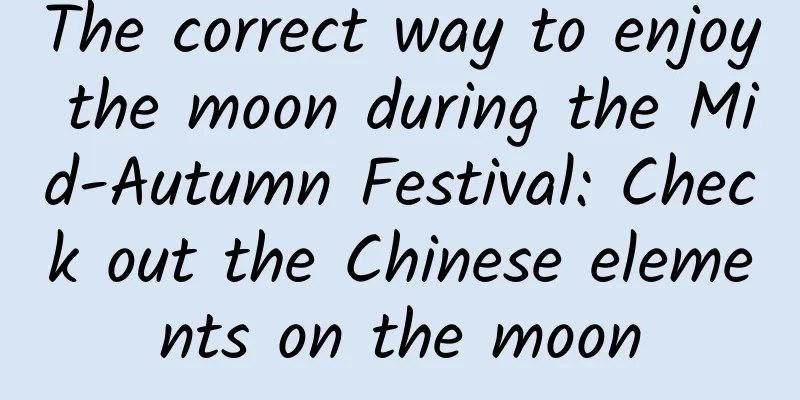The efficacy and function of persimmon parasite

|
As for Persimmon Parasite, I think some people may have heard of it or even taken it. It doesn’t matter if you haven’t heard of it. Next, I will introduce persimmon parasite to you. [Other names] Wanshou wood parasite, camphor parasite, pear parasite, mistletoe, coconut breeze, lotus leaf parasite, lilac parasite, grasshopper leg parasite, tung wood parasite [Source] Medicinal material source: The leafy stems and branches of Viscum album, a plant of the Loranthaceae family. [Original form] Subshrub, 0.3-0.5m high. The branches are erect or spreading, with crossed opposite or dichotomous branches. The internodes at the base or below the middle of the stem are nearly cylindrical, and the internodes of the twigs are slightly flat, 1.5-3.5cm long and 2-2.5mm wide, with 2-3 obvious longitudinal ribs after drying. In the seedling stage, there are 2-3 pairs of leaves; the leaves are elliptical or oblong, 1-2cm long, 3.5-6mm wide, obtuse at the apex, narrowly cuneate at the base, with 3 basal veins, and thin leathery; the leaves of growing plants are degenerate and scaly. Cymes, 1-3 axillary, peduncle almost absent, involucre boat-shaped, 1-1.5mm long, with 1-3 flowers; when there are 3 flowers, the central one is female, and the lateral ones are male flowers, usually with only 1 female or male flower; the male flower buds are ovoid, 1-1.5mm long, with 4 sepals, triangular, and round anthers adnate to the lower half of the sepals; the female flower buds are elliptical, 1.5-2mm long, with annular bracts or none at the base, the receptacle is elliptical, with 4 sepals, triangular, about 0.5mm long, and the stigma is nipple-shaped. The berries are oval or ovoid, 4-5mm long, 3-4mm in diameter, yellow or orange, with a smooth skin. Flowering and fruiting period is from April to December. [Habitat distribution] Ecological environment: Grown in plains or mountain evergreen broad-leaved forests below 2100m above sea level, parasitic on various plants such as persimmon trees, camphor trees, pear trees, tung trees or Fagaceae. 【Nature and flavor】 Bitter; neutral 【Meridian】 Liver; Lung; Stomach 【Functions and indications】Relieve rheumatism; strengthen muscles and bones; relieve cough; reduce swelling; lower blood pressure. It is used for rheumatic pain, back and leg pain, cough, hemoptysis, stomachache, fetal movement disorder, furuncle, and high blood pressure. [Usage and Dosage] For oral use: decoct in water, 9-15g, large dose can be up to 60g; or soak in wine, stew meat. For external use: take appropriate amount, grind into powder and apply on the affected area. 【Excerpt】 Chinese Materia Medica Through the above introduction, I found that persimmon parasite has so many pharmacological effects, and it also has good effects on some diseases. In fact, there may be many "treasures" around our lives, but most of the time we don’t have a heart that is good at discovering them. |
<<: The efficacy and function of stone fern
>>: The efficacy and function of wild pepper leaves
Recommend
What are the medicinal properties of Cassia seed?
Cassia seeds are the dried mature seeds of the le...
With the emergence of “evil nickel”, will the price of electric vehicles be able to remain unsustainable?
The price of nickel has been rising like crazy re...
The steamed buns are moldy, can you just peel off the skin and eat them? I really advise you not to do this again
"If the steamed buns are moldy, just peel of...
The efficacy and function of Powdered Herb
As the pressure of modern life increases, more an...
The efficacy and function of Guannanxiang
As for Guan Nanxiang, I think some people may hav...
What is the shelf life of Panax notoginseng powder?
Panax notoginseng powder has the effects of stopp...
The vitamin C "ceiling" in the fruit industry, many people may have never heard of it
Have you heard of a magical fruit that has dozens...
Clothes that are dried in the shade smell bad... See here for quick deodorization methods →
Review expert: Peng Guoqiu, deputy chief physicia...
Vitamin C is 21 times more than that of apples! This fruit is perfect for spring
There is a kind of fruit that “people who love it...
The efficacy and function of big green vine
As people's living standards improve, they pa...
Effects and functions of Gynostemma pentaphyllum soaked in water and how to eat it
With the continuous improvement of living standar...
The "slowest bird" may not fly first, but it may have the longest wings
Albatross, also known as sea mandarin duck, belon...
Will walking after a meal cause gastroptosis? How should you “walk a hundred steps after a meal”? Today we finally have the answer!
gossip When many of my friends were young, they w...
The efficacy and function of chrysanthemum seeds
Chrysanthemum seeds are a common herb and can be ...
The efficacy and function of radix schizonepetae
The seed of the Chinese herbal medicine is 蘘荷子, a...









